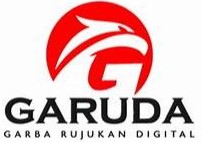The peer-review process at METAL: Jurnal Sistem Mekanik dan Termal is designed to ensure the academic quality, originality, and relevance of all published content. Our single-blind peer-review system ensures that reviewers remain anonymous while authors' identities are known, fostering an impartial and constructive evaluation of manuscripts. Below is the step-by-step outline of our peer-review process:
1. Submission of Manuscript
Authors submit their manuscripts through the journal’s online submission platform. The manuscript must conform to the journal’s submission guidelines, including formatting, structure, and scope requirements. Upon submission, the system generates an automatic acknowledgment to the corresponding author.
2. Initial Editorial Screening
The editorial team performs a preliminary review to ensure that the manuscript fits the journal's scope and focus. At this stage, the manuscript is assessed for:
- Relevance to mechanical and thermal engineering disciplines
- Compliance with the journal’s submission guidelines
- Originality using plagiarism detection tools
Manuscripts that do not meet the initial criteria or fall outside the journal’s scope will be desk-rejected. Authors are notified promptly if their submission is not suitable for further review.
3. Assignment to Section Editor
Once the manuscript passes the initial screening, it is assigned to a section editor with expertise in the relevant field. The section editor evaluates the manuscript's potential for contribution to the field and selects appropriate reviewers.
4. Reviewer Selection and Invitation
The section editor invites at least two independent reviewers who are experts in the manuscript’s subject area. Reviewers are chosen based on:
- Subject expertise aligned with the manuscript’s topic
- Previous reviewing experience and academic qualifications
- Absence of conflicts of interest with the authors or their institutions
If a reviewer declines or is unavailable, the section editor will promptly invite alternative reviewers to avoid unnecessary delays.
5. Single-Blind Peer Review
Once the reviewers accept the invitation, they are provided access to the manuscript and all relevant supplementary materials. The reviewers assess the manuscript based on the following criteria:
- Originality of the research question or hypothesis
- Methodological rigor and soundness of the research design
- Clarity and coherence of data presentation and discussion
- Significance and relevance to the mechanical and thermal engineering fields
- Adherence to ethical standards, such as proper citation and data integrity
Reviewers submit detailed reports with constructive feedback and a recommendation to either:
- Accept without revisions
- Accept with minor revisions
- Revise and resubmit (major revisions required)
- Reject the manuscript
6. Editor’s Decision
The section editor carefully evaluates the reviewers' reports and makes a recommendation to the Editor-in-Chief, who makes the final decision. The possible outcomes are:
- Acceptance: The manuscript is accepted as-is or with minor corrections
- Revisions required: Authors are asked to revise and resubmit based on the reviewers' feedback
- Rejection: The manuscript is not suitable for publication in the journal
The Editor-in-Chief’s decision, along with anonymized reviewer comments, is communicated to the authors. If revisions are required, specific instructions are provided.
7. Revision and Resubmission
Authors must submit the revised manuscript within the specified timeframe, addressing all reviewer comments and editor suggestions. A point-by-point response to the reviewers’ feedback must accompany the resubmission to facilitate the evaluation process.
8. Second Round of Review (if necessary)
If major revisions were requested, the revised manuscript may be sent back to the original reviewers to ensure that the authors have adequately addressed all concerns. Reviewers then provide further feedback or recommend acceptance.
9. Final Acceptance and Copyediting
Once the manuscript is accepted, it undergoes copyediting and proofreading to ensure clarity, consistency, and adherence to the journal’s style. Authors may be asked to review and approve the final version before publication.
10. Publication
The approved manuscript is published online in the next available issue of the journal. Authors receive a notification of publication along with the digital link to their article. The article is also indexed in relevant academic databases to maximize visibility and impact.
11. Post-Publication Review and Discussion
METAL encourages post-publication engagement through letters to the editor or comments on third-party platforms. Authors are expected to cooperate in addressing questions or criticisms about their published work, ensuring transparency and scholarly discourse.
Commitment to Quality and Timeliness
METAL strives to ensure timely and efficient review processes. The journal aims to complete the peer-review process within 4-6 weeks from submission to first decision. Authors are kept informed of their manuscript’s status throughout the process.








